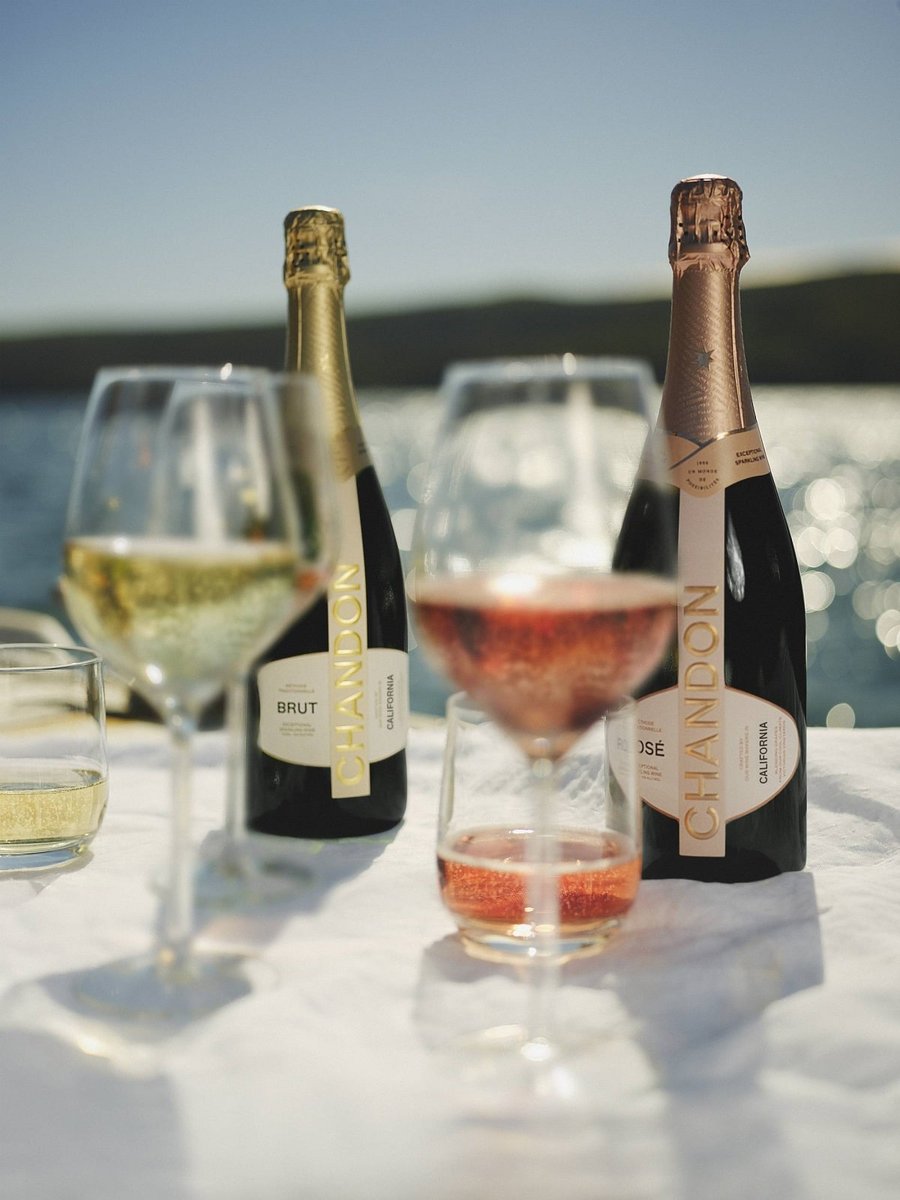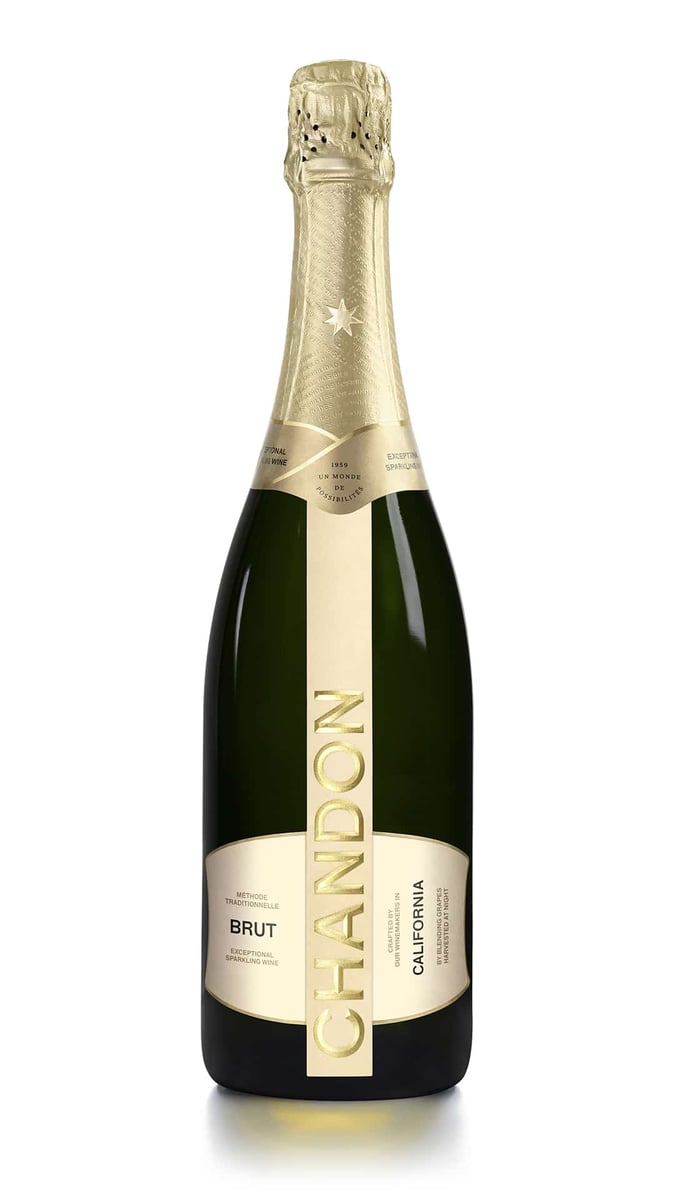Chandon has long been the sparkling wine empire on which the sun never sets, with the LVMH-owned Maison establishing an extensive network of wineries across the globe – Argentina, California, Brazil, China, India, Australia – to solidify its reputation for reliability. Consistency is clearly a pillar for the 62-year-old company, which why its surprising that a Chandon rebrand has seemingly landed out of nowhere. For the first time in Chandon’s glamorous history, the brand has received a new visual identity.
Why? Let’s unpack.
There are few names in the fine wine business, which isn’t exactly known for changes to iconic branding, as formidable as Chandon and its French sibling Moët. Both separately and together, they have built an image which almost defines the very idea of fine wine. Chandon changing that image seems to reflect the company’s desire to better communicate just how global the brand is, reiterating how its not just tethered to one wine-making region but rather is a true child of globalisation.
The Chandon rebrand now pays tribute to this reach. A bold vertical stripe runs the length of the bottle, while a new seven-pointed star sits at the top. Each point of this star, Chandon has said, represents the six renowned wineries spread across the countries mentioned above. The seventh tip is to represent a “pioneering spirit” which “leads the way” for Chandon’s ongoing evolution.
This new dynamic look is reportedly a permanent change for Chandon, unlike the more recent design collaboration between Moët and Japanese fashion house AMBUSH which facelifted the iconic cuvee in a strictly limited-edition capacity. Not only is it equally eye-catching, currently seen on Chandon Brut Classic and Rose vintages, but the rebranding is better connected to Chandon’s major point of distinction.

“The pioneering spirit has been embedded with the Chandon DNA since the birth of our Argentinian winery in 1959,” said VP Anne Sophie Stock.
“Chandon continues to discover new methods and terroirs to keep our sparkling wines at the top of the category – and this new visual identity is a representation of that. As a connection of global wineries, we are dedicated to this time-honored craft worldwide.”
The new design was crafted in-house, revising the Chandon logo and incorporating the shooting star on the foil to help the hot-stamped logo really pop. Importantly, nothing inside the actual bottle has changed. Although the recent redesign closely aligns with the release of the new Chandon Garden Spritz, an obvious play for the thriving aperitifs market with a spritz-like sparkling wine that’s been blended with bitter-orange liqueur. The rather obvious nod to the Argentinean love of bitter flavours should be a monster competitor to Campari Group’s Aperol, and seems to be a substantial change from Chandon S, which similarly blends Chandon sparkling with hand crafted orange bitters.
“Qualitative research indicates that this new package positions Chandon as a more premium choice than our previous package,” said Chandon Director of Market, Michael Stedman.
“The quality of the wine inside the bottle remains high, evidenced by third party endorsements and high scores. With this clean look on high quality, textured materials, we hope the visual cues on the outside of the bottle will translate into purchase.”
Chandon has itself had a presence in Australia for the past 35 years, with its local footprint stemming from the Domaine Chandon in the Chardonnay-rich region of the Yarra Valley. As such, the Chandon rebrand has already hit the country and is currently available on the Maison’s most well-regarded releases.

















